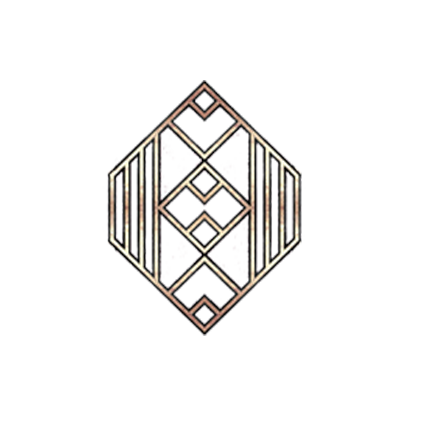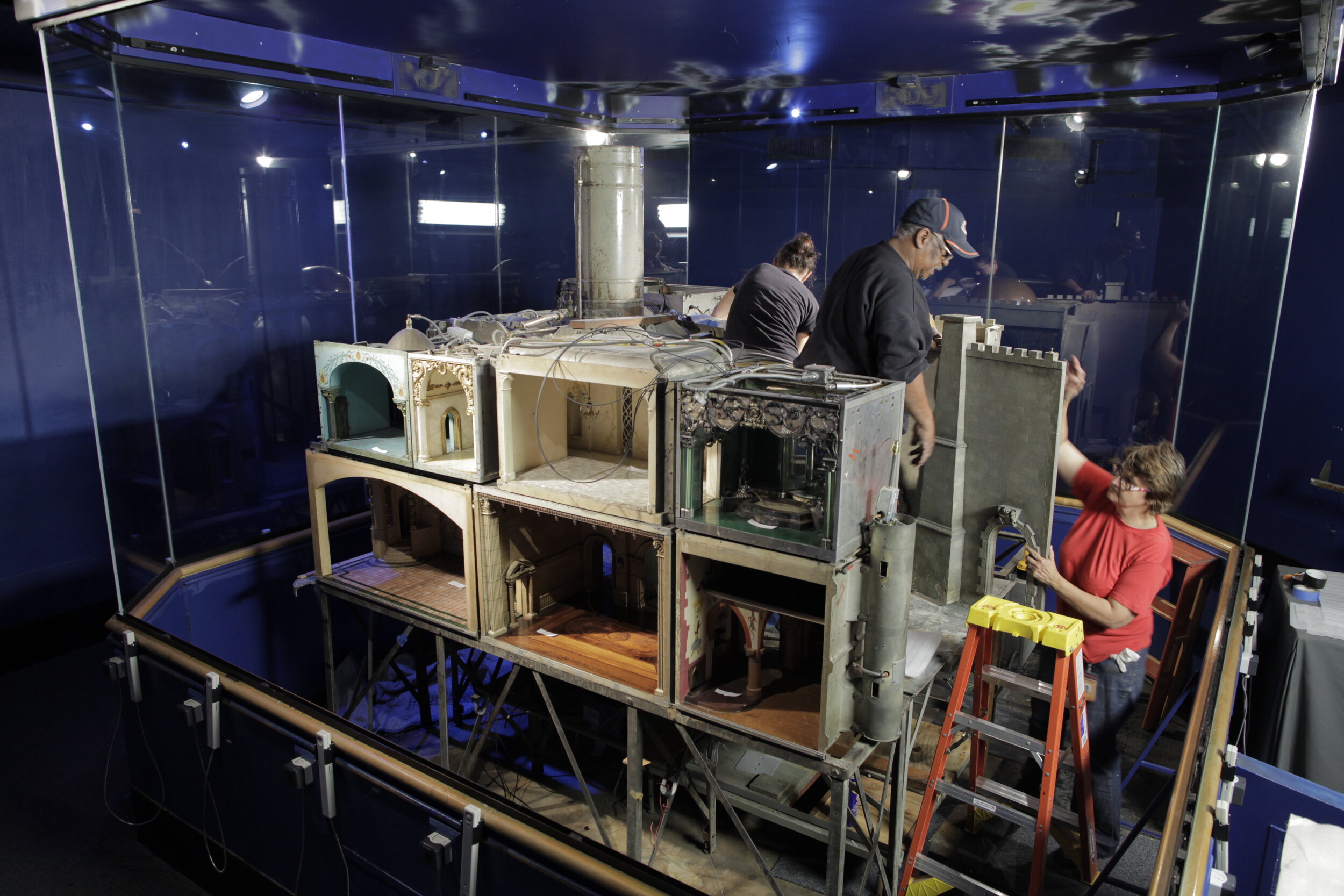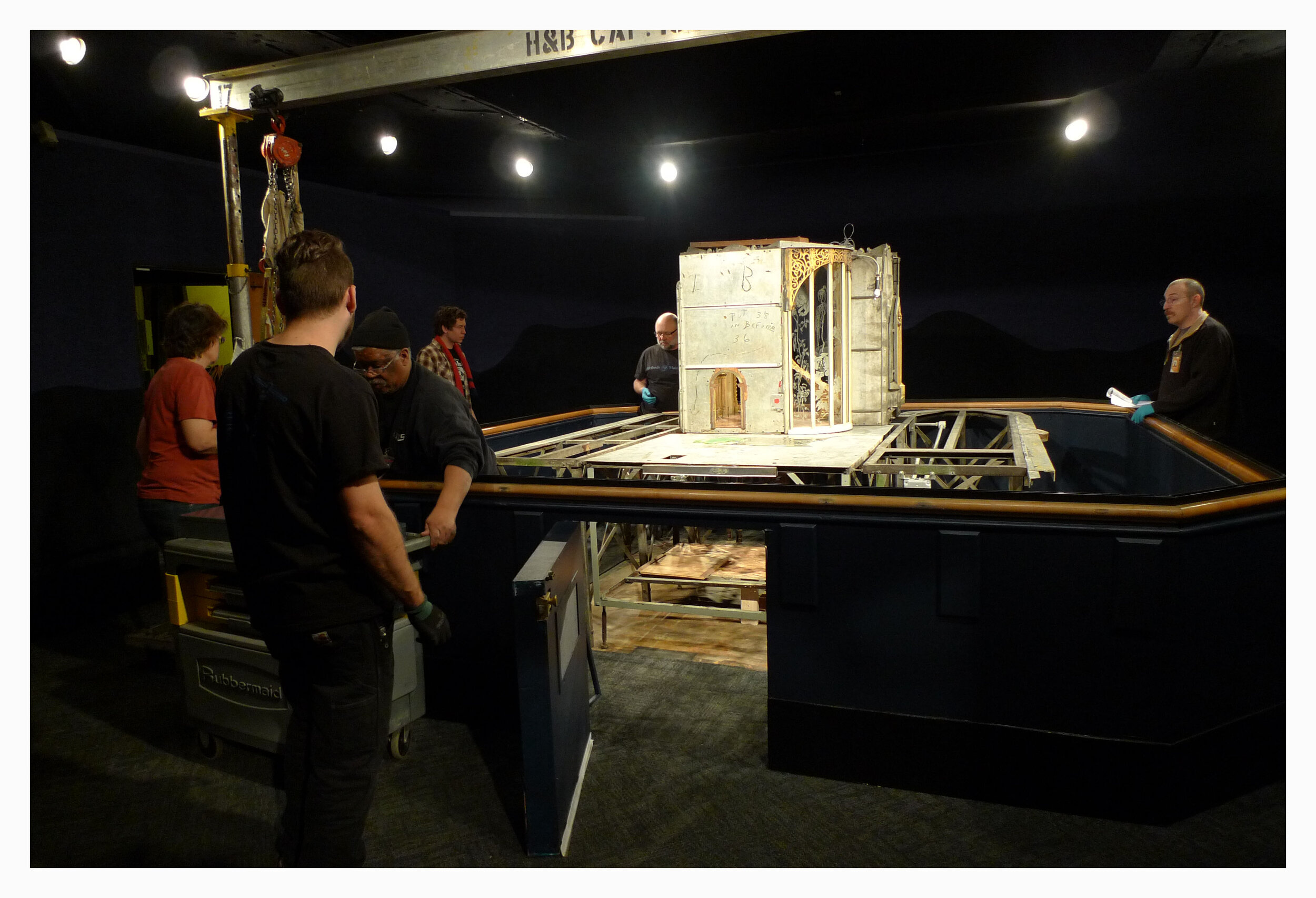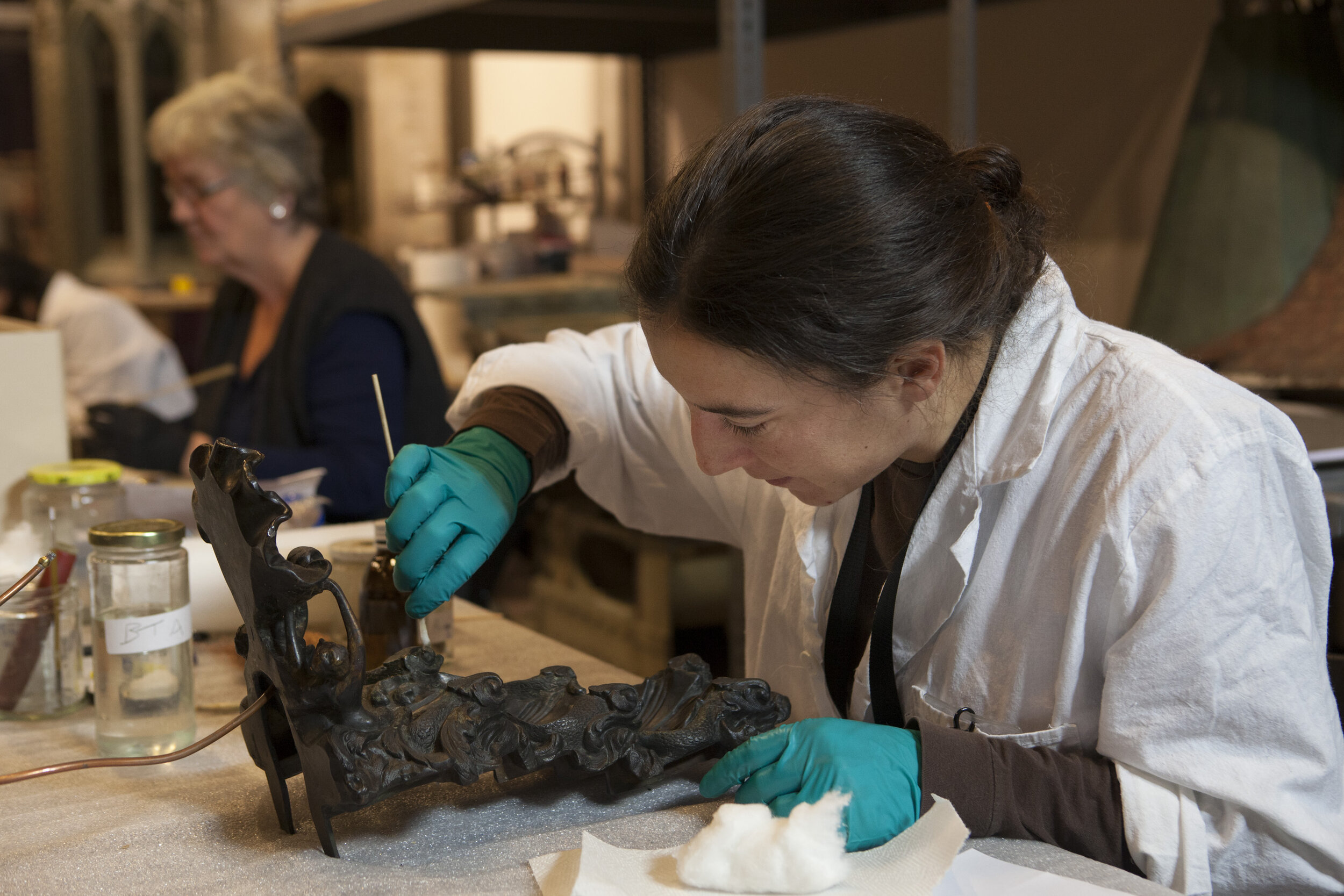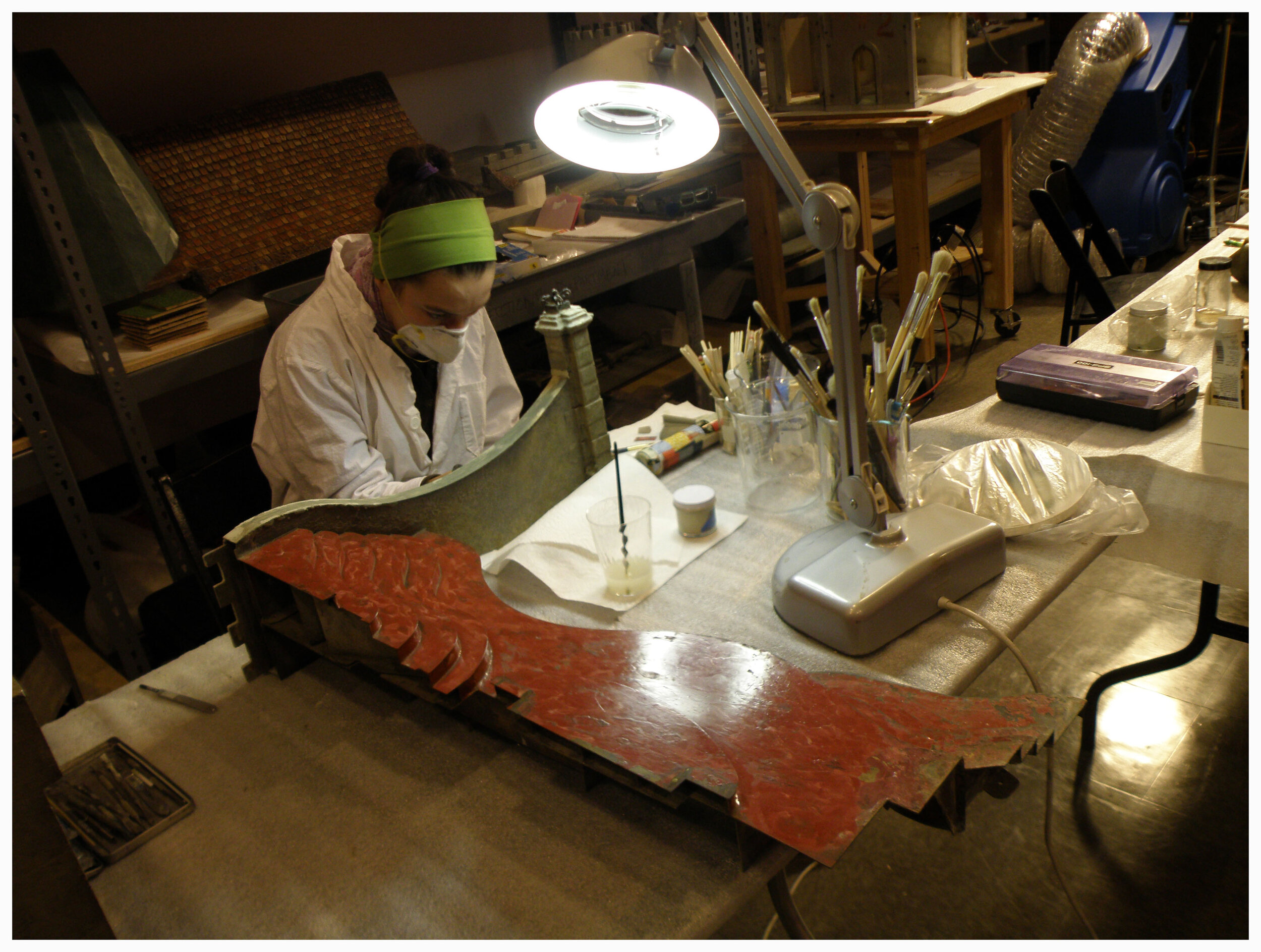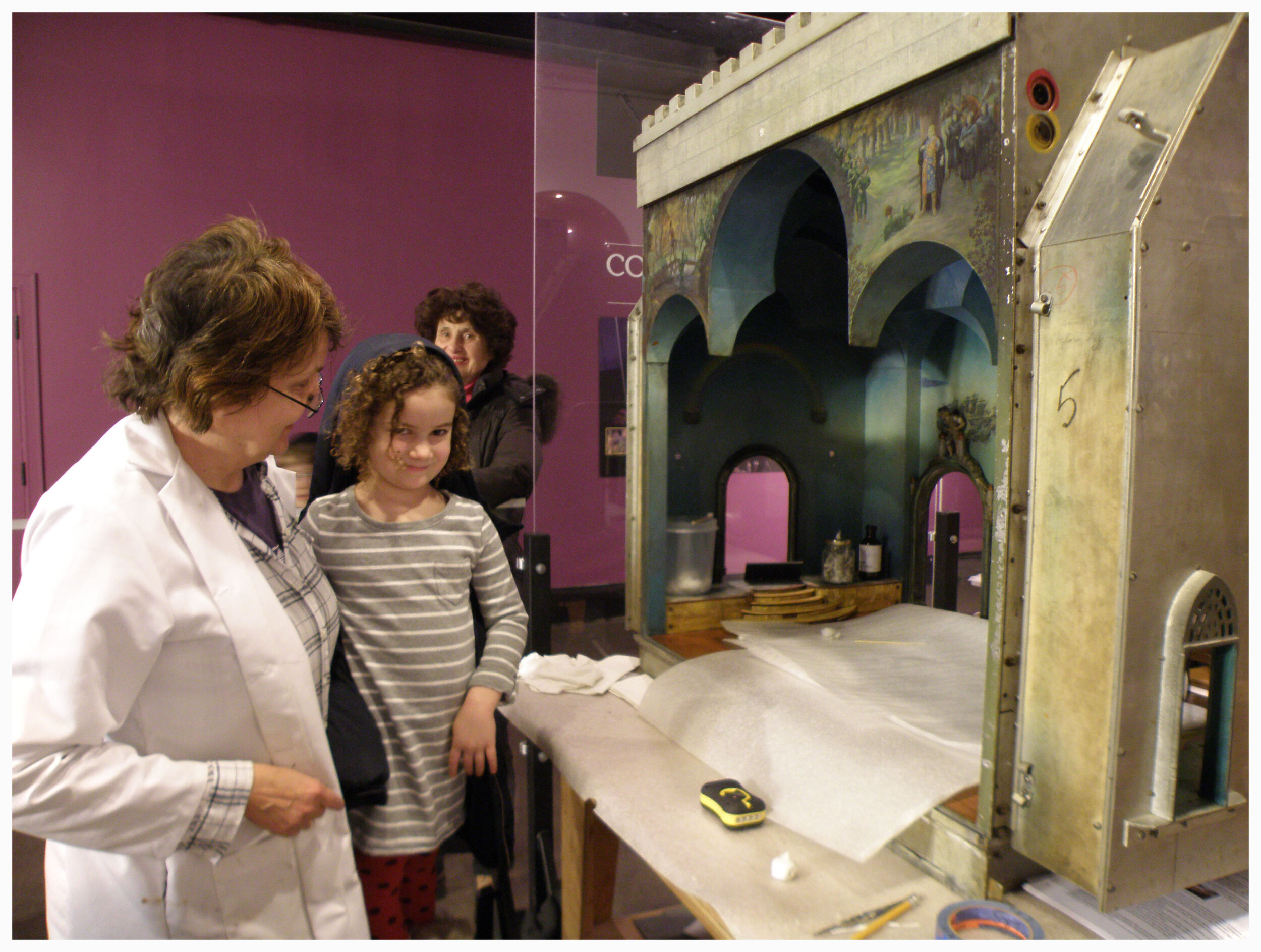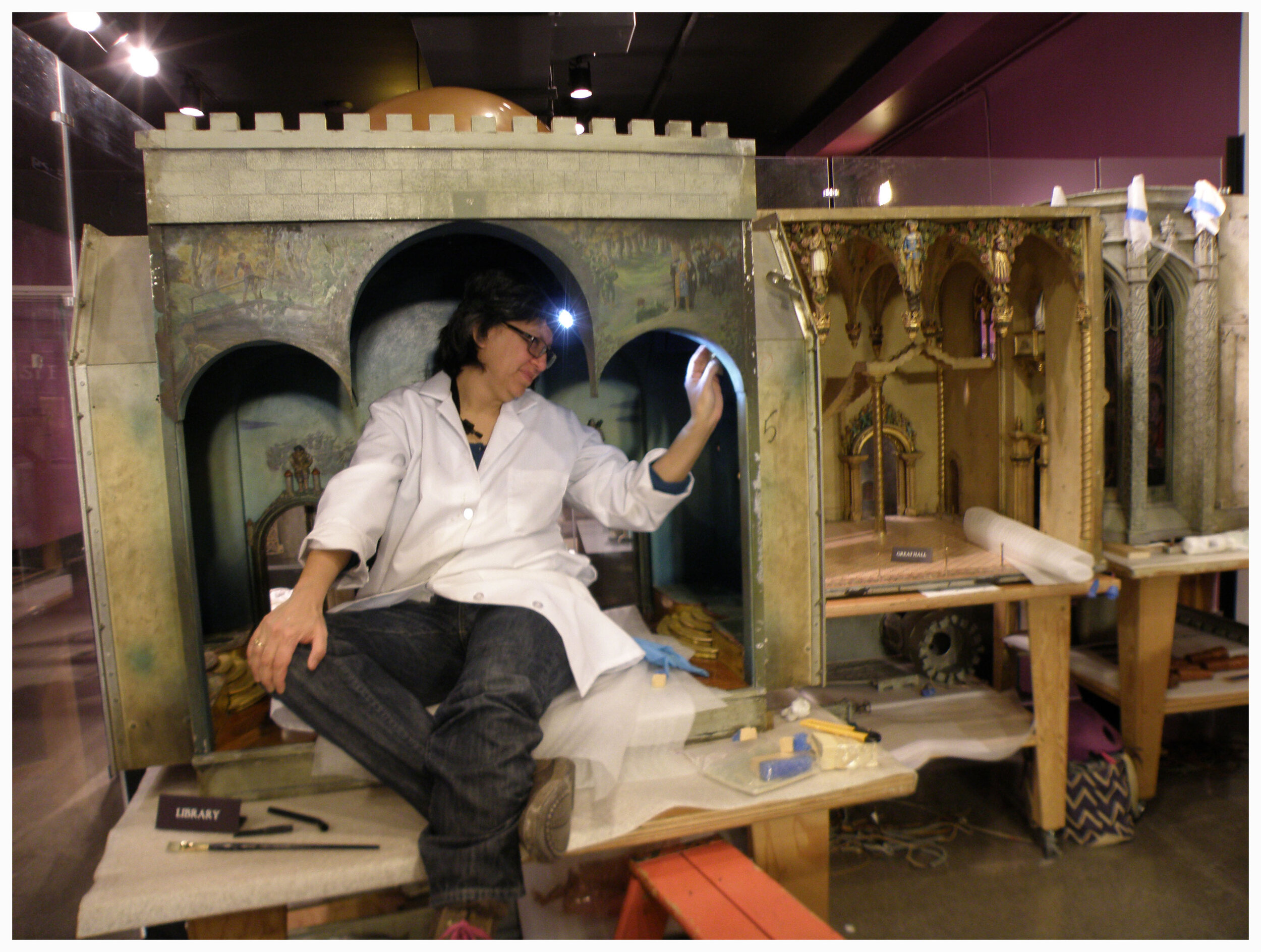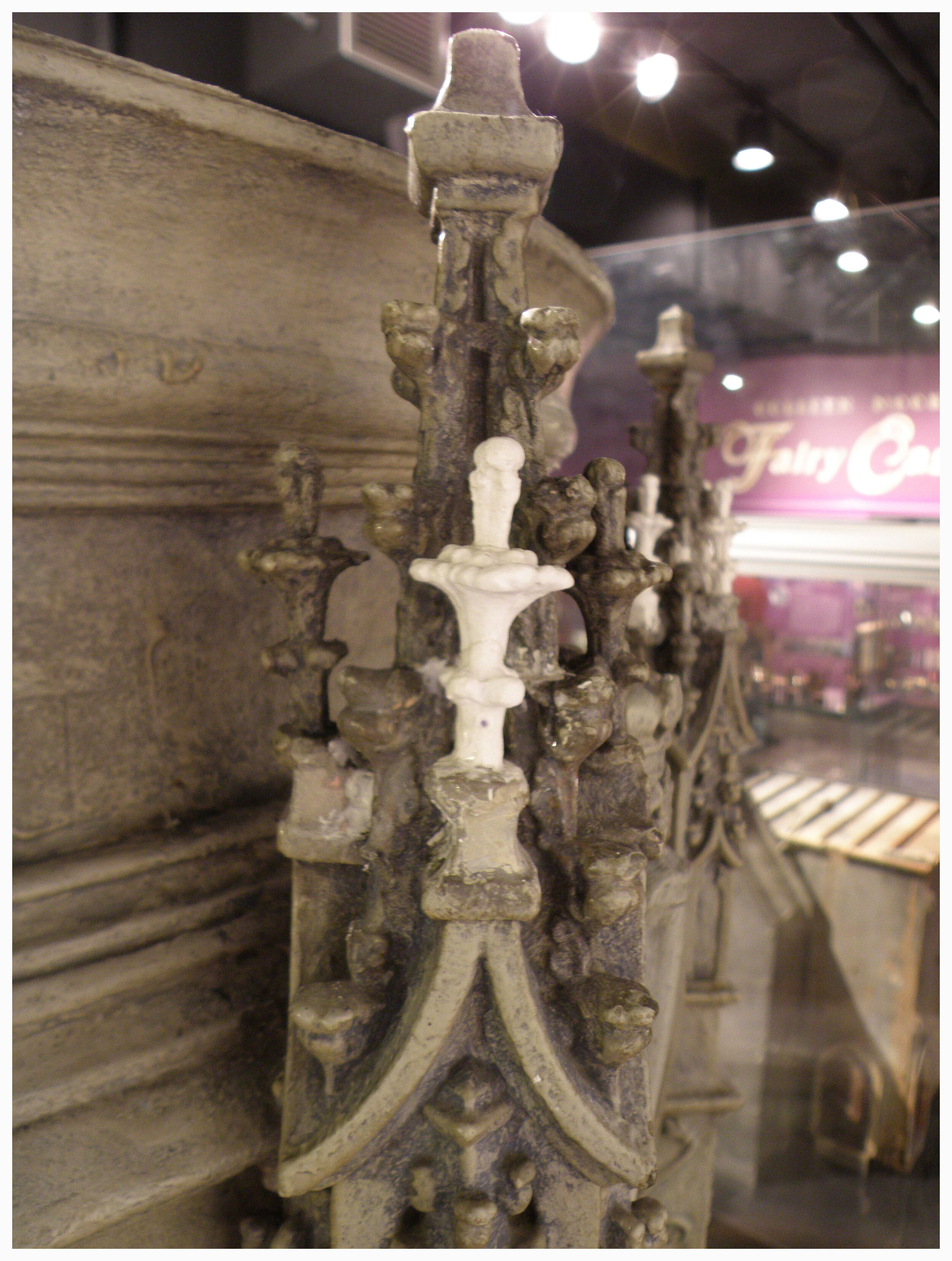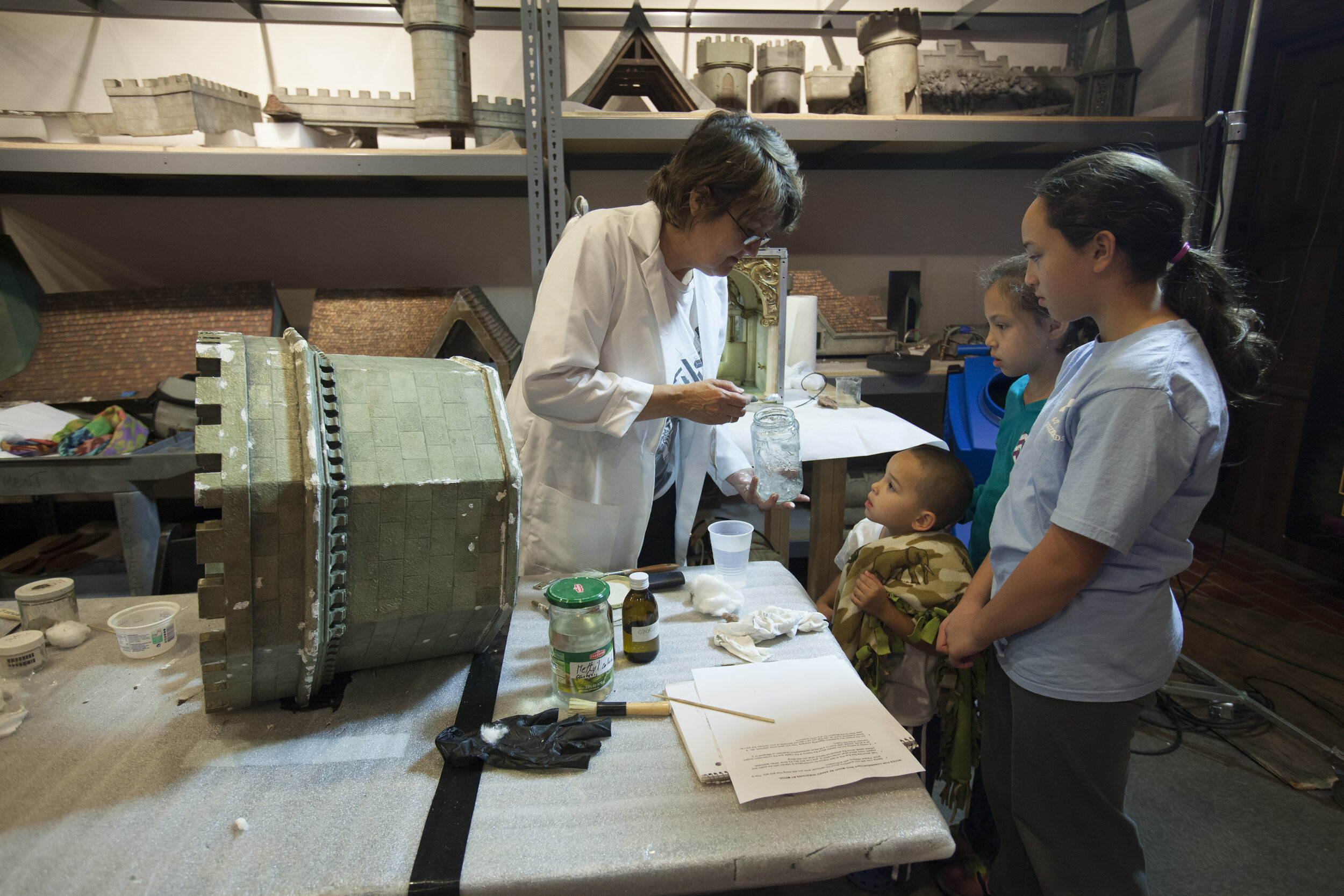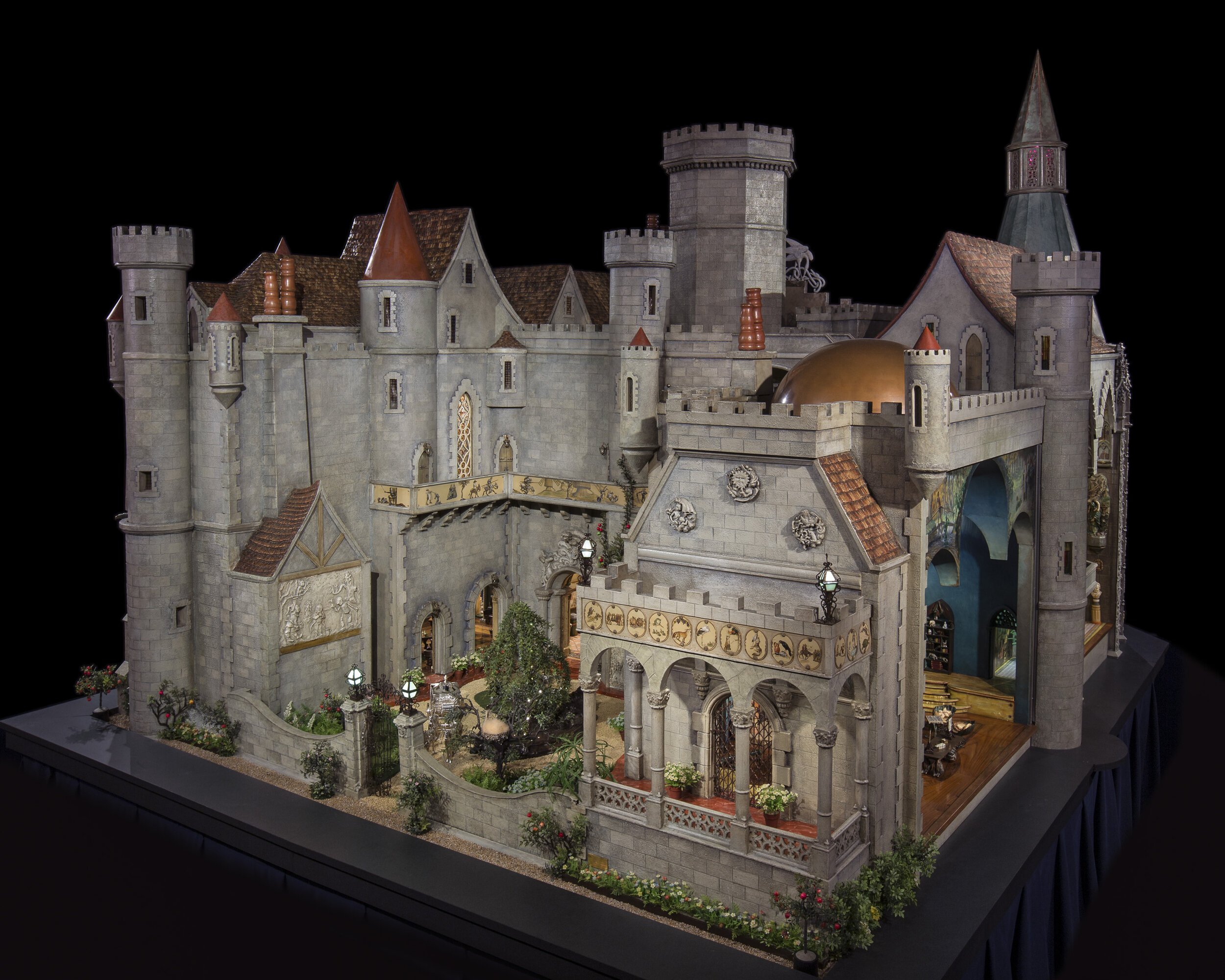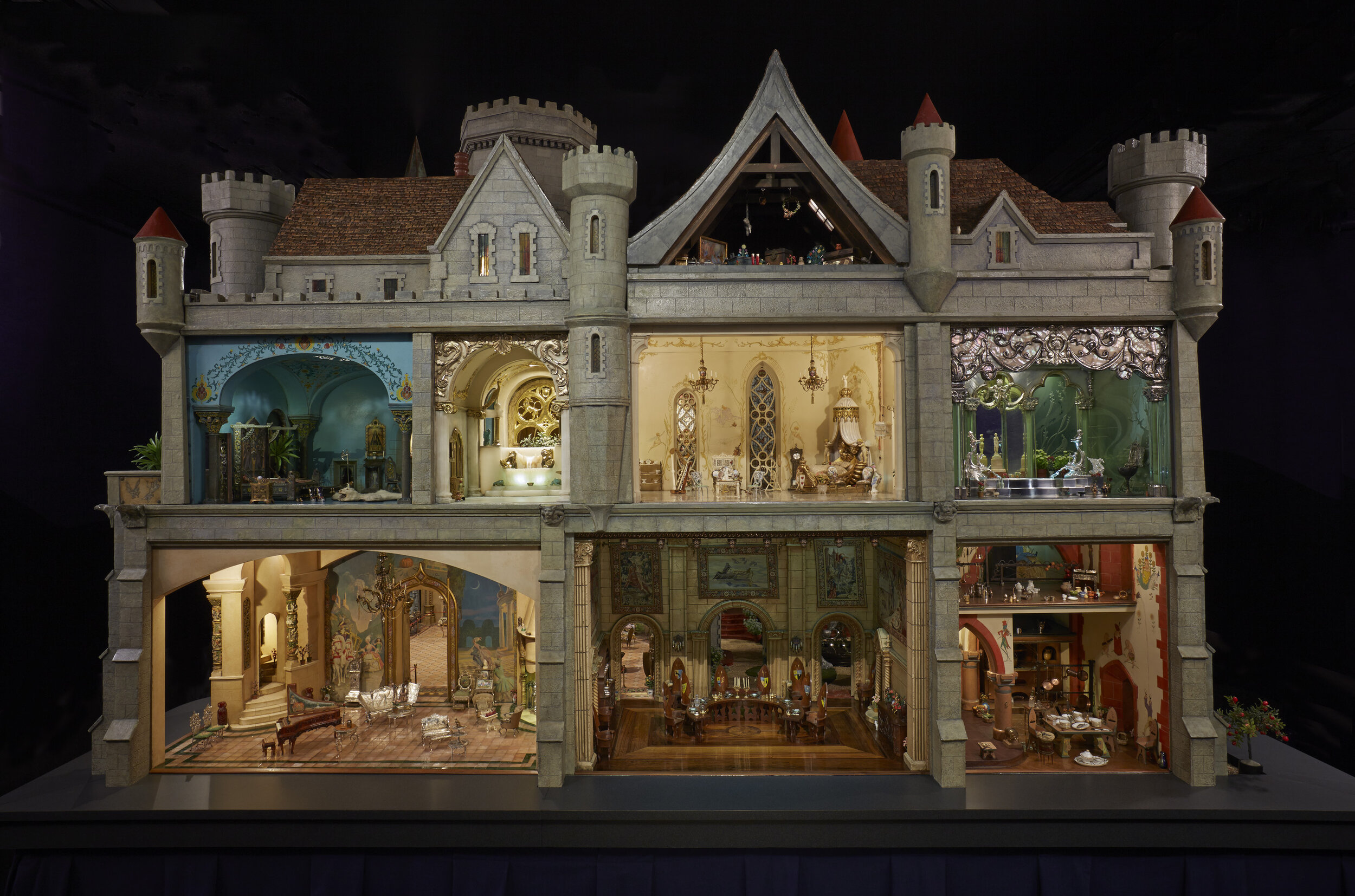- Fairy Castle -
Colleen Moore’s Fairy Castle - Museum of Science and industry, Chicago
Some images courtesy of the Museum of Science and Industry
Multiple materials in an iconic object
The Fairy Castle, composed of 200 elements with 1500 artifacts was intricately crafted of materials such as alabaster, plastic, leather, plaster, textiles, stained glass, copper, iron, bronze, silver, wood, gilding, and paint to name a few. The castle, originally known as a doll house, was donated to the museum in 1949 by silent film star Colleen Moore after she toured the world with it to raise money for children’s’ charities. The Conservation plan aimed to structurally stabilize elements and correct alignment, treat deteriorating surfaces and corrosion, and to improve visual effects to be consistent with the original intent, all while maintaining consistency throughout the entire object and ensure the ongoing preservation of this iconic object.
The project was carefully planned and executed. The team consisted of LTC’s conservators, preparators and curators from the museum, an electrician, a mount maker and consulting specialists on plastics and other materials. Treatment included the removal of distracting overpaint from many external features as well as the removal of bronze paint replaced with gilding in areas were originally gilded. Corrosion was stabilized throughout, and corrosion staining removed from areas such as in the Prince’s alabaster bathroom floor. The only substitutions from the original interpretive scheme was the removal of actual water and the upgrading of the lights. The pond, bath, and weeping willow water elements were replaced with simulated acrylic water with twinkling fiberoptic lights. Corroded or old electric cables in the kitchen oven, chandeliers, and wall lights were upgraded with LED and fiber optic lights, in order to not scorch or cause light damage to conserved elements. All detachable precious elements were also conserved and eventually carefully replaced, which involved the wearing of respirators as some of the elements were so small, they could be breathed in! The result is the sparkling, stable, icon so familiar to Chicagoans and visitors alike.
Below is a time-lapse of the installation, including MSI staff members and one of our project partners, Methods & Materials.
